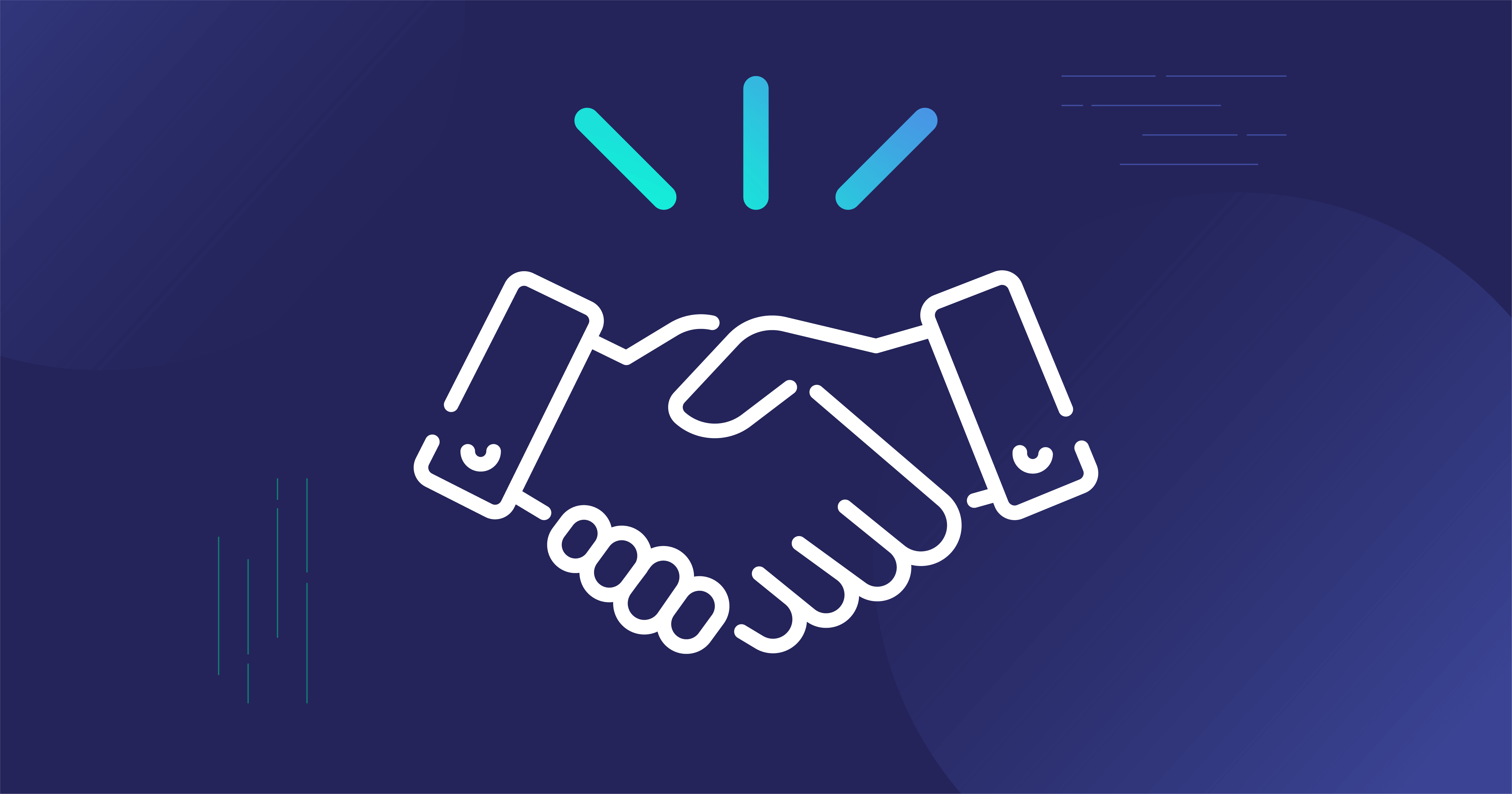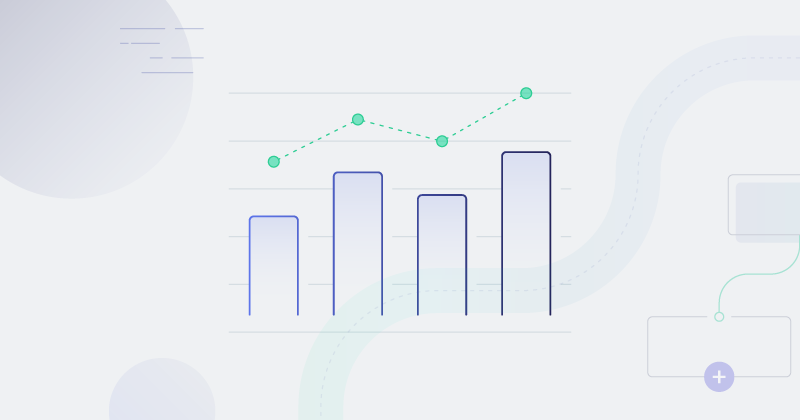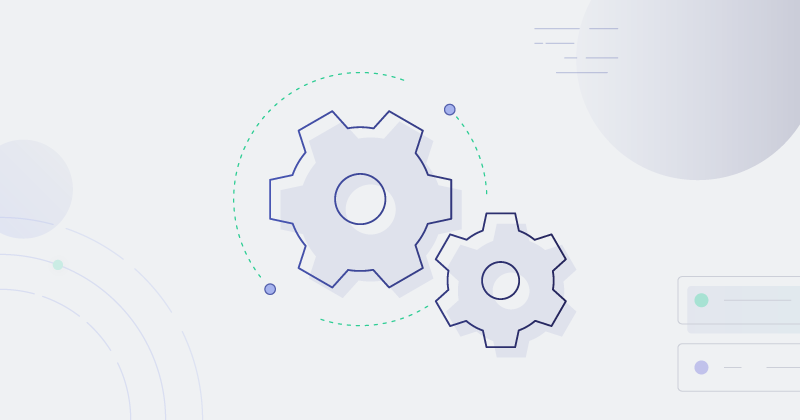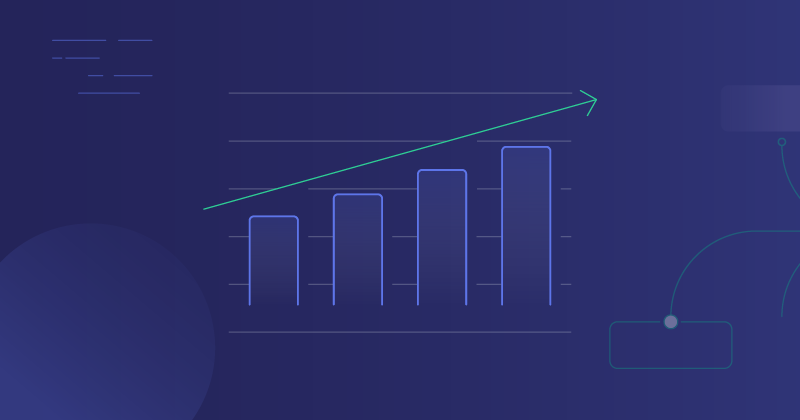A SaaS partner program defines business relationships between two SaaS companies. Partner programs are usually based on increasing sales, improving functionality, or otherwise enhancing a company's ability to market, sell, deploy, and support its software. SaaS partnerships have had a hugely positive effect on the SaaS market.
Partnerships must be mutually beneficial and built upon shared goals or linked incentives (rewards). SaaS partnerships are often, though not always, based on linked incentives. The rewards of the partner program (partner ecosystem) are often not identical for each partner in the relationship. But these rewards need to be significant and quantifiable, or there is little point to the partner program. Not all rewards are monetary, though a payment or commission is typical for companies participating in a SaaS partner program.
Why are SaaS partner programs important?
Each company participating in a SaaS partner program knows that a single software company can't reach everyone by itself. Partner programs allow each company to leverage relationships with other SaaS companies to reach more customers, sell more products, execute projects more rapidly, or provide better services than it could by itself. In short, a SaaS partner program can be a force multiplier for a company. And while a SaaS partner program may be a key piece of a company's marketing approach, its impact is much greater than that.
Without partner programs, many well-known SaaS companies, including HubSpot and Zendesk, wouldn't have a fraction of the reach they do today. These companies show that a properly executed SaaS partnership strategy can make you stand out from the competition – in the best possible way.
Types of SaaS partnerships
Companies use many different terms for types of SaaS partnerships, but they generally fall into one of two groups: channel partnerships and technology partnerships. There is also a category called strategic partnerships. These are typically comprised of channel or technology partnerships (or combinations of those types of partnerships) that are elevated to a position of high importance due to their impact on a company's business goals.
Channel partnerships
Partnerships primarily focused on revenue generation are often referred to as affiliate partnerships, referral partnerships, reseller partnerships, broker partnerships, or services integrator partnerships. Revenue-based partnerships usually come under the general heading of channel partnerships.
Technology partnerships
SaaS partnerships focused on enhancing or extending app capabilities are called technology (or tech) partnerships. Tech partnerships are also referred to as integration partnerships. Integration partnerships focus on automating workflows, improving the user experience, and making apps stickier. While integration partnerships may include selling as part of the relationship, it is not the primary goal, as it is with many channel partnerships.
Benefits of SaaS partnerships
Because SaaS partnerships vary substantially, the benefits do as well. And the benefits for a reseller, for example, may not be the same as for the company whose SaaS app is being resold. But the benefits of integration partnerships are often more equal for each partner. That said, SaaS partner ecosystems usually benefit marketing, sales, or customer service. Not all types of partner programs will drive the same benefits, so one program may provide an advantage in marketing but not customer service.
Here are the types of benefits you can expect from participating in a SaaS partnership:
- Marketing benefits. Getting the word out is a common reason for a SaaS company to join a partnership. Your marketing budget only goes so far for things like web-based advertising and trade shows. A partner program lets you substantially expand your company's marketing reach and presence without expanding its up-front costs. Partners are rewarded for bringing you up in discussions, including you in their marketing materials, and ensuring that your name and products are part of your partner's marketing message.
- Sales benefits. Once your company's name and product are visible to more prospects through your partner's marketing efforts, your sales will increase accordingly. For some companies, partner-driven sales may be a small fraction of their business, but for others, the bulk of sales is based on partners.
- Customer service benefits. Working with integration partners can help you drive faster onboarding, self-support capabilities, and improved times for support ticket resolution. Services integrator partnerships can also benefit you in areas from onboarding to support, depending on the nature of those partnerships.
- Customer experience benefits. Integration partnerships in particular can drive an improved customer experience by saving time, automating workflows, giving customers visibility into integrations, and allowing them to do their own configurations and troubleshooting.
Examples of SaaS partner programs
Let's look at a couple of successful SaaS partner programs by Auth0 and Slack. Each of these companies has built powerful, multi-faceted partner programs. And they've done so in a relatively short time.
Auth0 partner program
Auth0 rolled out the first version of its partner program in 2016. Its current partner program includes strategic alliances, managed service providers, ecosystem partners, and solution providers.
- Strategic alliances are for the partners with the largest cloud platforms used for building and hosting apps.
- Managed service providers are partners who manage and run Auth0 for clients.
- Ecosystem partners (technology partners or ISVs) provide integrations or other technology to extend the Auth0 product.
- Solution providers are those partners who design, build, and implement the Auth0 products.
Auth0 includes many top companies, such as Google, Apple, and Slack, as its partners. The company lists hundreds of other partners, large and small, between its partner portal and its marketplace.
Slack partner program
Slack began pitching partnerships in 2018. Since then, it has matured its partner program into four areas: technology, services, security and compliance, and promotional.
- Technology partners are companies whose products integrate with Slack to streamline workflows and increase productivity.
- Service partners are those companies who provide services to Slack's customers to power workplace collaboration.
- Security and compliance partners are a special subset of companies whose products extend Slack to address the areas such as data loss prevention, identity management, and e-discovery.
- Promotional partners are those who provide discounted Slack plans to their customers.
Given Slack's prominence (having some 20% of the collaborative software market), it is no surprise that its partners include companies like IBM, Amazon, Deloitte, and PwC. However, the list also includes hundreds of lesser-known SaaS companies.
How to build a SaaS partner program
Here are a few high-level things to remember for setting up and managing partner programs as part of your SaaS partner ecosystem.
Make sure your team is ready
Before you add a partner program, you must ensure your organization is ready. Have you reached product-market fit and successfully executed your growth plan?
Adding a partner program requires resources. Do you have those resources in place, or have they been allocated within the budget? Are you realistic with how much time and effort a new partner program will require?
Someone needs to be directly responsible for executing the program. Do you set up a separate partner team or create a cross-functional team with existing departments to set up and manage the partner program?
Determine the type of partner program you need
We've touched on several types of partner programs, though they can broadly be grouped as channel partnerships or technology partnerships. The underlying business need you are solving should help you determine the right partner program for your situation.
Do you need to break into a new market where you just aren’t getting traction? A reseller partnership may be the way to go. Do you need to increase sales without substantially increasing your sales team? A referral partnership might be right for you. Do you want to build integrations with a bunch of apps your customers use? A technology partnership with those vendors would support that need.
And, of course, what is your overall SaaS partner strategy? Will you only have a single program, or will you create several? Will the programs be similar or differ widely from each other?
Define your ideal partner
Your partner program should define some essential criteria for your partners (such as the type of partner: affiliate, reseller, tech, and so forth).
You should already have criteria to define your Ideal Customer Profile (ICP) for sales. In the same way, you should define an Ideal Partner Profile (IPP) for your partnership program.
Criteria should include size, market vertical, market penetration, and geographic region. Other criteria might include business culture, startup/business stage, or growth opportunity. The list of criteria should be detailed enough to help you narrow your focus to those partners who will best support the program you are establishing.
Define the incentives and goals for the program
Incentives may be both internal and external. Internal incentives include commissions for signing up partners or meeting partner sales goals. External incentives for your partners may consist of one-time payments, revenue-sharing agreements, and co-marketing events.
We already touched on this concerning determining the type of partner program, but you'll also want to define specific goals for the program. It may be revenue ("Increase sales of X by 20%, using reseller partners"), visibility ("ensure that we are competing in 25% of the business in X vertical"), or something else entirely. And the goals must be tangible and quantifiable. In addition to internal goals for the program, you may wish to have specific goals for each partner.
Invite and onboard your partners
Once you've determined the pool of possible partners, you should invite them to the program. By now, you should have a solid idea of what you are trying to achieve with the program. You'll want to create a partner agreement (contract) that establishes roles and responsibilities for both parties, incentives, timeframes, and anything else germane to the program.
After the contracts are in place, it's time for your partner team to onboard the new folks. This will vary, of course, based on the program particulars. However, it will often include setting up the partners to access a partner dashboard or PRM (partnership management) software and providing them with specific product and program-specific documentation, which may include anything from marketing materials to technical guides.
Review and revise as you go
You'll likely see things that should change before you even get your SaaS partner program going. Are individual goals for partners more of a stretch than anticipated? Dial them back before your partners get frustrated. Did you get fewer partners than will be required to meet your overall goals? Review your partner criteria and see if you can add more partners to the program.
Once a particular partner program is up and running successfully, you can leverage what you've learned to put together other partner programs (for different geographic regions, market verticals, or organization sizes). The market keeps changing, and you'll need to keep refining your SaaS partner ecosystem to keep pace.
Partner programs move you forward
SaaS partner programs allow you to leverage other SaaS companies' connections and visibility to market, sell, implement, and support your products. Such partnerships can enable you to substantially extend your market presence without a corresponding increase in marketing costs.
Many partner programs primarily focus on revenue-sharing, but others focus on directly extending the capability and functionality of SaaS apps. Regardless of your current product stage and market maturity, partner programs provide many ways for you to move your product and company forward.
For more details, check out our deep dive posts for channel partnerships and tech partnerships.




